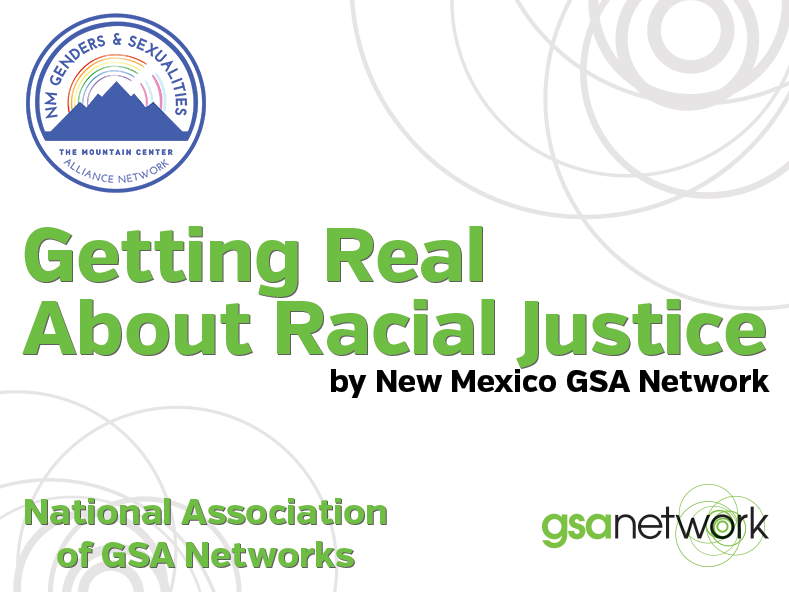
By Karen D., Program Manager, NM GSA Network
A few months back, during our annual Activist Camp, one of the youth involved with us at the New Mexico GSA Network described an experience in which she witnessed adults being vulnerable and sharing their experiences of pervasive, systemic, and harmful racism.
This young person shared that she was inspired by the conversation. She felt that it validated her own experiences of racism and made her feel closer to those adults. As a result of having that connection of community, she developed a sense that she could overcome challenges she faces as a young person of color. Importantly, she saw these adults being real.
When adults share their own experiences with racial oppression with youth, it shows us that we are not alone and that’s it’s okay, and even encouraged, to show vulnerability.
As folks involved in GSA Networks across the country, we know intellectually that it is our responsibility to model anti-racism, to hold systems (and the people running them) accountable for their racism, and to call out racism and call in new allies. We do this work because it teaches youth how to advocate for themselves. It moves them toward healing broken systems and the creation of safer spaces for youth in the future. Quite simply, it is not only the right thing to do, but our duty to our own self-respect to question, challenge, and resist white supremacy.
Some of my favorite authors—from Toni Morrison & James Baldwin to Ta-Nehisi Coates & Tressie McMillan Cottom—write eloquently about the experience of racism in the United States, both from an intellectual perspective and from sharing their painful, shameful, anger-inducing lived experiences.
When I reflect on this realness and vulnerability while working with LGBTQ youth, a quote from poet Claudia Rankine plays through my mind. “Why are we here if not for each other?” This quote is part of a powerful work in which she marvels at racist apathy—the lack of genuineness, of vulnerability, of compassion and realness on the part of our systems and their leaders.
It is meaningful that the young person was not from the same racial or ethnic group as the adults baring their tender hearts. We do not always need to have a lot in common with the youth we work with; in fact, it’s far more likely that we don’t. But so many LGBTQ young people, and indeed us as adults, grapple with our everyday experiences of racism, racist systems, and oppression built upon our intersectional identities. As adults, we can pull back the curtain to our experiences and allow youth to witness our willingness to be accountable, to be committed to our self-preservation and our internal and systemic healing. Most importantly, it is our duty to model the humanness pouring from our tender hearts that allows us to be real with youth and have these crucially vulnerable, necessary conversations.
Finding common ground—in this case, surviving and thriving under racist systems—to connect and be honest and truly real about our experiences creates bridges with youth that are the backbone of our community.
